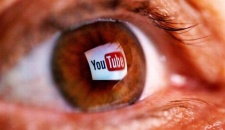“Daddy, I’ve decided I really want to be an actress.”
“Right. Okay. Look, my love…”
“But you always told me to follow my dreams.”
“Yes, I know...”
“And I want this more than anything.”
“I’m sure, but the thing you have to realise is that for every successful actress there are thousands and thousands of failed ones who live miserable lives with no money, prospects or hope.”
“Fine. Can I have a puppy then?”
Ignore the puppy bit, I just didn’t really know how to close that opening segment properly, and I like puppies, so… Anyway, replace the word ‘actress’ with ‘YouTuber’ and any you’ve instantly got an insight into the lives of modern parents, whose kids are obsessed with becoming streaming video stars.
But where there’s a boom there’s a bust, and while it feels like the golden age of YouTube millionaires was upon us just a handful of racial slurs ago, 2017 comes to an end with a very different outlook for those who earn a living creating video content - and the brands that want to associate with them.
Exactly when the clouds began to darken over Camp YouTube is hard to pin down, but certainly a big shift occurred early this year when PewDiePie’s often controversial behaviour caught up with him.
The Swede had always straddled the fine line between ‘edgy’ and ‘offensive’ but when The Wall Street Journal cottoned on to an anti-semitic strand of humour running through some of his late 2016 content, Disney’s Maker Studios severed ties with him.
Amid the furore, YouTube was forced to cut ads from the videos in question – a move that opened the door to commercial partners taking a closer look at what their brands were being aligned with. And they didn’t like what they found. It transpired that young YouTubers had a habit of not just flirting with distasteful content, but sometimes descending into outright racism and hate talk.
By March YouTube was facing a full-scale advertiser boycott with the likes of PepsiCo, Walmart, Starbucks, McDonalds and GM pulling their support. Furthermore, it was a problem to which there was no immediate solution.
YouTube had built itself around providing wide open gates for user content – with 400 hours of video being uploaded every minute, it fell to bots to root out the racists and homophobes, and they weren’t doing a good job. Human moderators could do better, of course, but the logistics of getting a large enough workforce in place would have put Google’s service out of business.
All YouTube could do was tighten its restrictions, the result of which of course was that while previously all sorts of dodgy things had been flooding the site, now innocent content was being snared with advertising bans. Dave Rubin of political channel The Rubin Report was just one of many creators to suffer a hit, with Google’s new algorithms stripping him of revenue. So delicate had YouTube’s approach become that all bar the most vanilla content was facing a monetisation struggle.
Furthermore, some conservative viewers objecting to content as innocuous as a lesbian couple getting engaged resulted in red flags being raised against all manner of legitimate LGBT material. Channels such as Real Women Real Stories, which highlights the plight of domestic violence survivors, saw advertising revenues drop from $2,000 in June 2016 to $10 in June 2017.
“When I reached out to YouTube to see why our videos were being demonetised, they said it’s because the videos are not advertiser friendly,” channel owner Matan Uziel told Digiday. “They came to the conclusion that videos that cover topics such as sexual abuse, rape and women’s issues, in general, could not be monetised.”
The need to do right was now resulting in lots of doing wrong. The company warned that there would be a period of instability while it got its house in order and tried to avoid what threatened to become a billion-dollar problem.
Things never really got the chance to settle, however. PewDiePie was back in the headlines by the autumn after being caught barking the n-word while streaming. The result? Developers issued takedowns on content featuring their games and the community as a whole rounded on the star.
A fresh controversy awaited just around the corner, however.
In November a report emerged detailing what appeared to be a systematic effort from a network of creators to mentally traumatise the world’s children. Were this not bad enough, once investigators started down this new rabbit hole they discovered that a whole new world of paedophilic content available on the service.
The result? A fresh advertiser exodus. YouTube reacted by killing in the region of 270 accounts and 150,000 videos, yanking ads from two million videos and deleting comments on a further 625,000, to try and clean itself up. Unfortunately, some innocent channels also got caught up in the purge.
At this stage most are left expecting a fresh controversy almost daily. And as YouTube continues to battle those who wish to use its network for bad, the sad result is that many who want only to do good are being caught up in the crossfire.
Certainly the opportunity still exists for creators to make a living off the channel, but now more than ever it’s advisable to avoid putting all of your eggs in the YouTube basket. And advertisers need to be more careful than ever about who they chose to align their brands with. Even the biggest family-friendly names cannot automatically be trusted to be safe.













